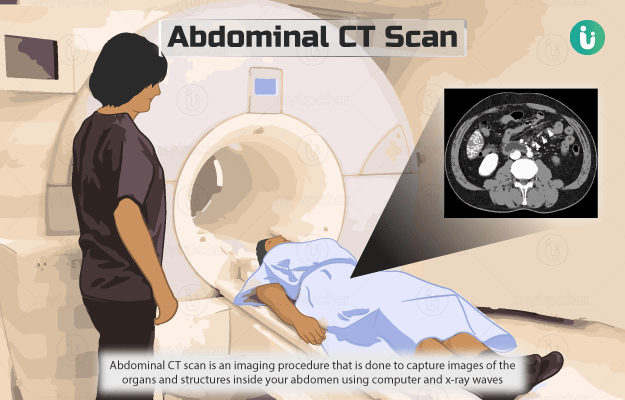What is a Computed Tomography (CT) scan of the whole abdomen?
Computed tomography (CT) scan of the abdomen is an imaging procedure that is done to capture images of the organs and structures (blood vessels, muscles, and fat for example) inside your abdomen using computer and x-ray waves.
These images enable the healthcare provider to check for any abnormalities in your abdominal cavity.
During the scan, several x-ray beams move around your body (sometimes in a spiral path) as you pass through the CT scan machine and the radiation absorbed throughout the body is measured. A computer reads this data and produces two-dimensional images of the scanned area.
CT scan provides detailed images of the internal organs and tissues. However, a contrast dye is sometimes administered into the body of the patient to help view the images more clearly. The dye binds to specific tissues and creates light and darker areas that makes it easier for the doctor or technician to differentiate them.








































